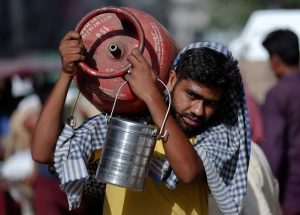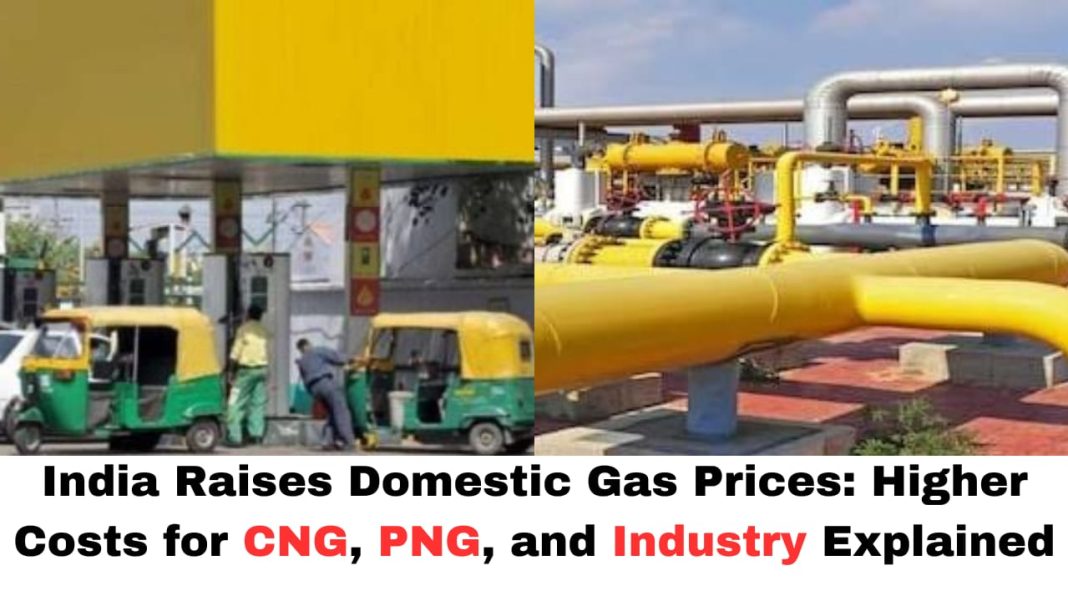Digital News Guru National Desk:
India has announced a 4% increase in the price of domestically produced natural gas from legacy fields, effective April 1, 2025. The new rate is set at $6.75 per million British thermal units (MMBtu), up from the previous $6.50 per MMBtu. This marks the first adjustment in two years and is part of a broader strategy to gradually transition toward market-driven pricing while balancing the interests of producers and consumers.
The price revision aligns with the government’s 2023 decision to implement a price cap of $6.50 per MMBtu for two years, with provisions for annual increases of $0.25 starting in the third year. Additionally, the price ceiling for gas extracted from challenging deep-sea fields has been set at $10.04 per MMBtu for the April-September period, slightly lower than the previous $10.16 per MMBtu cap.
While this price hike is expected to boost revenues for upstream gas producers such as Oil and Natural Gas Corporation (ONGC) and Oil India Limited (OIL), it is also likely to increase costs for industrial consumers and key sectors like fertilizers, power generation, and city gas distribution.

Why Has the Indian Government Increased Gas Prices?
Several key factors have contributed to this price increase:
- Global Energy Market Volatility:
- Over the past few years, fluctuations in international gas prices have impacted India’s energy pricing mechanism. The Russia-Ukraine war and supply chain disruptions have led to volatility in natural gas prices worldwide.
- Encouraging Domestic Gas Production:
- The Indian government has been focusing on reducing the country’s dependence on imported LNG (Liquefied Natural Gas) by incentivizing domestic production. Higher prices may encourage more investments in exploration and production activities.
- Gradual Market-Linked Pricing Approach:
- The 2023 reforms in the gas pricing formula were aimed at aligning domestic gas prices more closely with global benchmarks while providing stability to consumers. The latest price hike is part of this phased approach.
- Revenue Generation for Gas Producers:
- Companies like ONGC and Oil India have long demanded a pricing structure that ensures better profitability. With higher gas prices, these firms can enhance their earnings and reinvest in exploration projects.
Impact on Key Sectors
The gas price hike will have widespread implications across various industries and consumers.
- City Gas Distribution (CNG and PNG Prices May Rise)
Compressed Natural Gas (CNG) and Piped Natural Gas (PNG) are widely used in households and transportation. Any increase in gas prices could directly impact:
- CNG vehicle users: Auto-rickshaws, taxis, and buses in cities like Delhi, Mumbai, and Bangalore depend on CNG for lower operating costs. The hike may lead to an increase in public transport fares.
- Domestic PNG users: Consumers relying on piped gas for cooking could see a rise in their monthly gas bills.

- Fertilizer Industry (Potential Rise in Subsidy Burden)
Natural gas is a primary feedstock for producing urea, a crucial fertilizer in India’s agricultural sector. A rise in gas prices means:
- Higher input costs for fertilizer manufacturers.
- A potential increase in government subsidies to keep fertilizer prices affordable for farmers.
- Power Sector (Electricity Tariffs May Be Affected)
- Gas-based power plants contribute to India’s electricity supply, though they form a small percentage of the overall energy mix.
- A rise in gas prices could increase power generation costs, potentially leading to higher electricity tariffs in states dependent on gas-based power.
- Industrial and Manufacturing Sector
Industries such as steel, ceramics, glass, and petrochemicals rely heavily on natural gas. The cost escalation may:
- Increase manufacturing expenses.
- Lead to a possible rise in product prices, impacting consumers indirectly.
How Will This Affect the Common Consumer?
For the average Indian, this price hike may have both direct and indirect effects:
- Direct impact: Higher PNG bills and increased CNG prices will affect household budgets and daily transportation costs.
- Indirect impact: The rise in industrial gas prices could lead to higher costs for goods and services, which might contribute to inflation.
To mitigate these effects, the government may consider:
- Subsidy adjustments for key sectors like fertilizers and power.
- Tariff revisions in city gas distribution to balance consumer affordability.
- Encouraging alternative energy sources such as biogas and renewables.
Government’s Strategy and Future Outlook
- Energy Security and Long-Term Planning
The Indian government is working towards increasing domestic gas output to meet rising energy demands. Prime Minister Narendra Modi’s target of increasing the share of natural gas in India’s energy mix from 6% to 15% by 2030 remains a key objective.
- Expansion of Gas Infrastructure
The government is also expanding the natural gas pipeline network to improve gas availability across the country. The Pradhan Mantri Urja Ganga Project is one such initiative to enhance the reach of domestic gas.
- Renewable Energy Push
Given global climate commitments, India is also focusing on renewable alternatives. Green hydrogen, solar, and wind energy are being promoted to reduce dependence on fossil fuels.
Conclusion
The decision to increase domestic gas prices is a double-edged sword—it benefits gas producers and supports India’s long-term energy security goals, but it also raises costs for industries and consumers.

In the short term, sectors like CNG, PNG, fertilizers, power, and manufacturing may face higher input costs. However, the move is aligned with India’s strategy to encourage domestic gas exploration, reduce import dependence, and adopt a market-linked pricing approach.
To ensure a balanced approach, the government may need to provide targeted relief measures for vulnerable sectors while continuing to invest in alternative energy solutions for long-term stability. The coming months will reveal how businesses, industries, and consumers adapt to this change and what further measures the government might take to manage its impact.
You May Also Read: Chaitra Navratri 2025: Worshipping Goddess Durga in Her Nine Divine Forms








